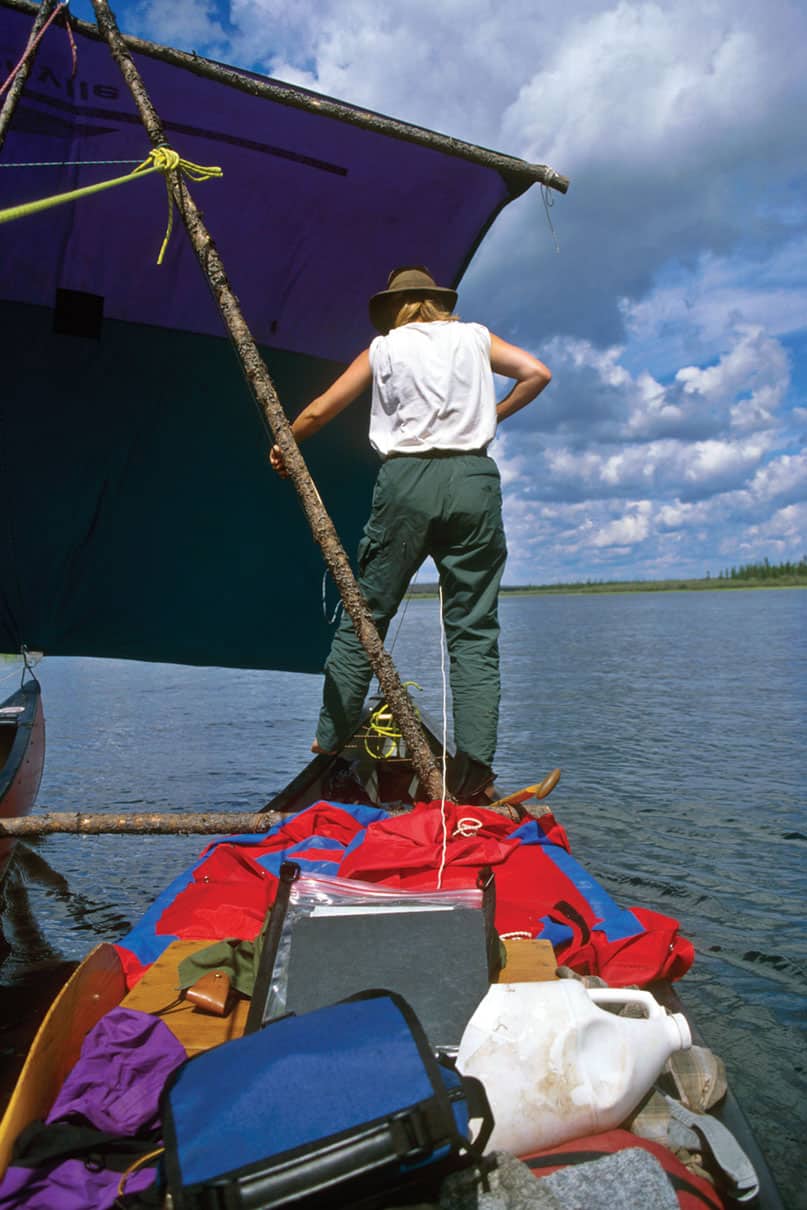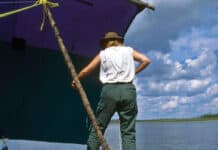Every year, I see a proliferation of makeshift boats, sails aloft, plodding down big lakes and rivers. Canoe sailing is a great adventure and a wonderful way to make headway and combine a rest day in one shot. But it can be a dangerous undertaking if not done right—never underestimate the vagaries of wind, weather, distance or tide.

How to rig a canoe sail and harness the wind
There are as many ways to rig canoes for sailing as there are sailing rigs, but it doesn’t have to be scientific or complicated. Many paddlers simply tie off a jacket or small tarp to paddles and hand-hold a quick sail until their arms give out.
The typical, quick, field-assembled catamaran that can be easily and swiftly cruised down a lake can be completely rigged and ready to shove off in less than an hour.
1
You will need enough wood for cross-supports, masts and the gaff pole. I often carry trimmed spruce poles for the mast and gaff pole because it isn’t recommended that paddlers start cutting down trees to build sailboats. In some areas, there’s likely a lot of available deadwood that can be used for cross-supports.
2
Catamaran two or more canoes together with cross-supports, keeping two feet between canoes.
3
Rig a single mast on an inverted V. Make sure the mast is tied off securely.
4
Tie a tent fly or a kitchen tarp to the gaff pole and lash it to the top of the mast. The loose bottom corners of any sail piece can be tied off to the running lines and adjusted to trim the sail and prevent luffing (flapping).
5
A wide-blade paddle or traditional steering board can be used as a rudder, usually dipped and held from the starboard side of the two boats. Spray decks can be fastened down to keep the wash out, or just have bailers handy.
Rig it and rip. | Feature photo: Hap Wilson



 This article was first published in Issue 73 of Paddling Magazine.
This article was first published in Issue 73 of Paddling Magazine. 





More photos on how to do this would make the article MUCH useful. Not useful in the current state